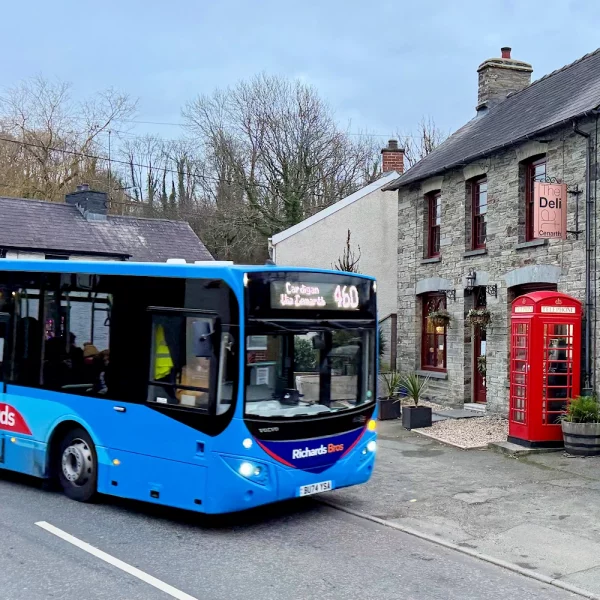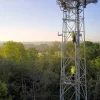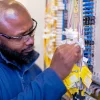Trial Seeks to Improve Broadband on Public Transport in Swansea Bay Area

The Welsh Government (WG) and a consortium of partners have today kicked off the StarBws project, which will trial a mix of Low Earth Orbit (LEO) satellite and 4G mobile (wireless) technologies from Starlink, Peplink and wavemobile in order to improve broadband for passengers travelling on public transportation in rural parts of the Swansea Bay area.
Getting good internet connectivity on public transport in rural areas can be a challenge, not least due to obstructions such as tree canopies and valleys, which would normally block the signal. But it’s hoped that the combination of Starlink’s LEO satellites, with Peplink’s network bonding and failover capabilities, and wavemobile’s LTE (4G) Band 46 Cell technology for onboard “in motion” coverage may be able to overcome this. Dragon WiFi is also involved.
The trial itself will initially focus on the rural 460 Carmarthen to Cardigan bus service, which operates four times daily and takes 1 hour and 26 minutes to complete one way. Having begun in Autumn 2024, the project will run for one year, providing valuable insights into the needs of passengers as well as the potential of advanced connectivity solutions in rural settings.
Advertisement
Simon Richards, Director at Richards Bros (bus company), said:
“The StarBws project exemplifies our commitment to pioneering new connectivity solutions, ensuring our rural routes are not only reliable but also equipped with the latest in modern communication services. This initiative highlights our dedication to improving public transport for the communities we serve, showcasing the benefits of being an agile and forward-thinking operator.”
Rob Stewart, Leader of Swansea Council, said:
“This project represents significant progress in innovation, tackling a well-known challenge in rural transportation. The application of this technology not only benefits rural areas but also has the potential to enhance connectivity and efficiency across all forms of public transport, especially on longer journeys where commuters need to be able to continue working.”
Ken Skates, Cabinet Secretary for Transport and North Wales, said:
“I am pleased Welsh Government has been able to support this innovative and really worthwhile project. WiFi connectivity on public transport, particularly in rural areas can be challenging. The StarBws project will provide a solution for that, allowing people to use their devices for work and leisure, keeping them connected even when they are travelling through remote countryside.”
The £1.3bn Swansea Bay City Deal project is said to fully support this initiative and looks forward to tracking the trial, which provides an opportunity to explore how various technologies can be leveraged to address real-time challenges faced by passengers using public transport in rural areas.
Mark is a professional technology writer, IT consultant and computer engineer from Dorset (England), he also founded ISPreview in 1999 and enjoys analysing the latest telecoms and broadband developments. Find me on X (Twitter), Mastodon, Facebook, BlueSky, Threads.net and Linkedin.





















































for further information about this project, please email media@dragonwifi.wales
I have to say, this is intriguing to see. Especially when band 46 is barely used (and Cardigan happens to just get band 20 only coverage from O2 and I think band 8+20 on Vodafone) as it is and they’re planning on using Starlink in a moving vehicle.
This sounds pretty interesting. Let’s see how this goes.
The route is from Carmarthen to Cardigan – that’s a 1h:26m long journey. There are some not spots with all mobile operators along parts of the route, in addition there’s dense tree cover and a concrete tunnel in Carmarthen station which blocks starlink, its been researched and engineered in a way so a service is always available within the bus, even if there’s nothing outside.
I’m no expert but is it not a VERY bad idea to post an email address? Don’t they get picked up by the bad guys and spammed? Please excuse me if I’m indulging in internet superstition.
Instead of this money waste, why not just downscale the huge empty double decker buses to small vans like they do in Hong Kong
Given most bus journey’s are short it does not seem to be a good use of money